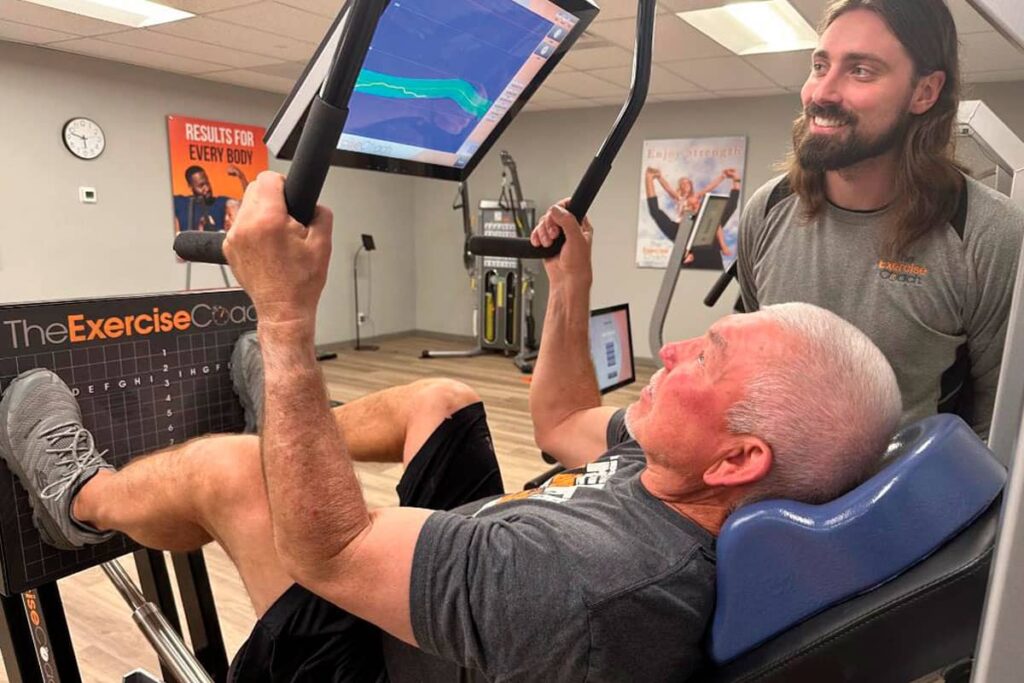With type 2 diabetes, heart disease, and America’s waistline bulging to frightening highs, what we think we know, and what we’ve been led to believe about fat loss, is not only wrong, but completely backward.
hat’s right. Your difficulty losing weight is truly not your fault. You have been misinformed for years about healthy eating (i.e., fat makes you fat; replace fat with carbs). You have been misinformed about exercise’s role in reducing body fat. And, you have been bombarded by celebrity messages that claim, “This worked for me, so it will work for you.”
At The Exercise Coach®, we make it our policy not to cave in to popular fitness trends, but rather to go wherever the science of fat loss and exercise leads us. It is our hope that you take the time to read, understand, and pass along this information to as many people as you can.
Share it with others so together you can maximize your fitness and fat-loss efforts while enjoying total freedom from time-consuming and defeating conventional approaches. You can enjoy maximum fitness and fat loss results with just 20 to 40 minutes of exercise per week – and I will tell you how. First, let’s start tearing
MYTH #4 STRENGTH CAUSES BULKINESS

Weight loss has a powerful impact on a person’s wellness. Equally motivating for most people, though, are their appearancebased goals.
Women want to fit into their skinny jeans or go sleeveless. Men want to rid themselves of the all-toocommon spare tire. In simple terms, people want to be smaller, not larger. I’ve found that for many people,this creates an understandable, yet unwarranted, and counter-productive, fear of building muscle. I can’t count the number of times I’ve told someone the No. 1 goal of exercise should be to build muscle only to hear, “No, No. I don’t want to build muscle. I want to lose weight.”
What the client means is, “I am afraid that building muscle will make me bigger than I already feel.” But, building muscle is absolutely critical for maximizing fat loss results, so we need to deal with this myth. First of all, most people do not have the ability to build large muscles. The potential for increases in muscle size is determined primarily by two things: geometry and genetic expression.
GEOMETRY
On the flip side of the bulky myth is the myth that anyone who wants large muscles can do so by following a bodybuilding type program. I’ve had to gently squash the aspirations of many young men looking to get huge.
Based on my experience and understanding of anatomy, I can usually tell within seconds of looking at someone if they have the capacity to be the next Arnold Schwarzenegger or not. To make it more concrete, I point out the following: A muscle’s capacity to grow in thickness is based on the ratio between the length of the actual muscle versus the visible length of that muscle tendon.
Let me give you an example. Bend your arm to 90 degrees at the elbow. Now measure the number of finger widths you can fit between your bicep and forearm. If the answer is two or more, don’t worry — Arnold you are not!
GENES
The other major determinant of muscle size has to do with the expression of the gene known as myostatin.
Research has been done on individuals with abnormally large muscles and, by and large, their myostatin expression is very limited. Fortunately, most of us have myostatin that is speaking loud and clear to the body saying, “Hey, get stronger, but don’t get bigger. It costs too much metabolically.” Probably less than one person out of every hundred thousand possesses myostatin that allows the building of very large muscles.
One final consideration is the actual amount of space fat tissue takes up compared to muscle. So, the average 40-year-old had a little more muscle, not less, 10 years prior when they were happier with their figure (physique for you guys reading this).
It’s Hard work to put back on those five pounds. Most people are lucky to do that. Any more than that would be rare. Now consider that fat takes up a lot more space than muscle. Five pounds of fat is about as voluminous as a gallon milk jug. Now picture five pounds of ground round. It doesn’t take up nearly as much space.
So, if you gain five pounds of muscle and lose five pounds of fat, guess what? You are smaller. And, most people at age 40 have more than five pounds of fat to lose.
So practically every 40-year-old in America has a greater potential to get smaller through fat loss than they do to grow larger through muscle building. Do not fear muscle. It’s your best fat-loss friend.
Coming next month, Myth No. 5. In the meantime, the choice is yours to make, and at The Exercise Coach®, we can help.
Make TODAY the day to start on that road to better health and fitness! Let our caring and knowledgeable Certified Coaches get you started! Call, text, or visit us online for your complimentary Initial Consultation and 2 FREE Sessions at (480) 716-6080 or exercisecoach.com\north-mesa.


